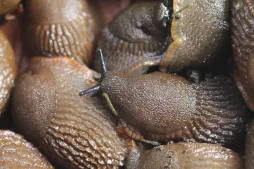Agapanthus inapertus, the closed-flowered agapanthus
Agapanthus inapertus is a plant of the Amaryllidaceae family native to Eswatini and Mozambique. It can be recognized by its umbels of drooping flowers.
How to recognize Agapanthus inapertus?
Agapanthus inapertus grows to between 90 and 150 centimetres tall. It's a perennial with a bushy habit.
The aculeate plant develops a tuft of leaves at its base. The bright green to dark green blades are long, narrow ribbons. Like agapanthus campanulatus, Agapanthus inapertus has deciduous foliage. It disappears in winter, when temperatures become too cold.
In summer, a flowering spike over a metre long grows from the heart of the leaf rosette. This rigid green stem is crowned by an umbel of some thirty tubular, hanging flowers. Their color varies according to cultivar. In the botanical variety, the bloom is almost violet-blue. But it can also be very dark purple, as in Agapanthus inapertus 'Midnight Cascade', eggplant, as in Agapanthus inapertus 'Graskop', or bright blue, as in Agapanthus inapertus 'Crystal Cascade'.
Fruits appear in early autumn in the form of dehiscent capsules. Inside are black, winged seeds.
Agapanthus is toxic. Their sap causes irritation on contact and digestive problems if swallowed. Keep pets away from your plants, and protect yourself when pruning or repotting!
Our maintenance tips
Agapanthus inapertus can have deciduous or semi-evergreen foliage. If you live in a region where it freezes, prefer the former. They are hardier and equally resistant to sea spray and drought.
Watering
Water your plant generously during the growing season.
Agapanthus inapertus fear excess water. To prevent root rot, allow the substrate to dry between waterings and remove any stagnant water from the saucer.
Water the soil preferably with rainwater. The soil should be moist but not soggy.
Reduce watering during dormancy.
Agapanthus inapertus live in desert regions. They tolerate drought, but dread excess water. The substrate must remain completely dry for a few days between waterings.
When watering, use water at room temperature to avoid stressing the plant.
Roots run deep. You therefore need to moisten the entire root ball. Pour in water until the excess runs out through the drainage hole. Stop watering and empty any water that accumulates in the saucer or planter. It may rot the roots.
Repotting
Soak your Agapanthus inapertus. Choose a pierced pot that is taller than it is wide. Its diameter should be slightly larger than the root ball, but its depth should be greater to allow the root system to develop.
Fill the bottom of the pot with a rich, draining substrate, such as potting soil for Mediterranean plants. Plant your Agapanthus inapertus. The rootball should be a few centimetres below the rim of the pot. Add potting soil to reach the height of the root ball.
Water generously to encourage rooting and remove air bubbles. Mulch withmineral or vegetable matter to keep the soil cool.
Fertilization
To promote the growth of your Agapanthus inapertus, apply fertilizer in spring and summer.
Apply flowering plant fertilizer to stimulate flowering.
Prune
To encourage the growth of your Agapanthus inapertus, prune regularly.
Remove dried leaves.
Cut back flower stems when flowers have wilted. If you use a tool, make sure it's clean and sharp.
Plantation
When the risk of frost has passed, it's time to plant.
Soak your Agapanthus inapertus. Dig a planting hole at least 30 centimetres deep. Remove stones and weeds. If you're planting several specimens, space them 50 centimetres apart.
Plant your Agapanthus inapertus. The rootball should be level with the ground. Fill in with garden soil. You can add compost if your soil is poor, or sand if it's heavy. Water copiously to eliminate air bubbles and aid recovery.
You can also mulch the base witha mineral material (slate, gravel, pebbles) or plant material (leaves, hemp, wood shavings) to keep the soil fresh. This will also prevent the appearance of weeds!
Cutting
Cutting is carried out during the strong growth phase, generally in spring and early summer.
Agapanthus inapertus are rhizomatous plants. They multiply by dividing clumps.
Take your Agapanthus inapertus out of its pot. Using your hands or a clean, sharp tool, separate a shoot with at least four leaves and a rhizome. The more developed your young shoot, the greater your chances of a successful cutting.
Obtain a drilled pot. Its diameter should correspond to the size of the cutting, but it should be deep (around 30 centimetres) so that the roots can develop.
Fill it with a rich, well-draining substrate, such as potting soil for Mediterranean plants.
Place your agapanthus inapertus in the center. Add potting soil and tamp gently. Water to encourage rooting and remove air bubbles.
You can use plant or mineral mulch to keep the soil cool and limit watering.
Disease / Threat
Information
| Family | Amaryllidaceae - Amaryllidaceae |
| Type | Agapanthus - Agapanthus |
| Species | Agapanthus inapertus - Agapanthus inapertus |
| Lifecycle | Perennial |
| Foliage | Deciduous |
| Exposure | |
| Substrats | |
| Planting methods |
Open ground In pots In tubs |
| Categories | |
| Tags |
Beginner Flowery Rustic |
| Origin |
South Africa |
| Hardiness (USDA) | 9a |
| Leaf color |
|
| Flower colors |
|
| Fruit colors |
|
Discover plants from the same family
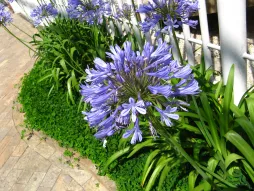
Agapanthus africanus
Discover
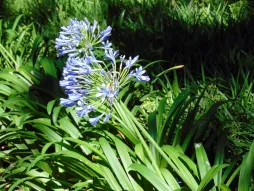
Early Agapanthus
Discover
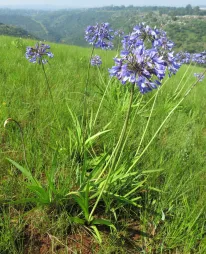
Agapanthus campanulatus
Discover
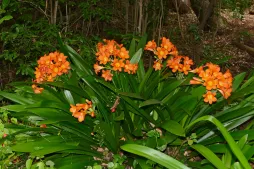
Clivia miniata
Discover












